When it comes to CRM data cleansing, you may wonder about the intricate steps involved in this essential process. From correcting errors to enriching data, each stage plays a crucial role in ensuring the accuracy and reliability of your customer information. But how exactly do these components work together seamlessly to transform raw data into valuable insights for your business operations? Let’s explore the intricacies of CRM data cleansing to uncover the meticulous procedures that lead to enhanced data quality and customer relationships.
Data Correction
When it comes to the process of CRM data cleansing, data correction plays a crucial role in ensuring the accuracy and reliability of the information stored in your database. Data accuracy is essential for making informed business decisions and maintaining a positive relationship with your customers. Error correction involves identifying and rectifying any inaccuracies, inconsistencies, or outdated information within your dataset.
To improve data accuracy, it is crucial to implement robust error correction processes. This includes regular audits of your database to identify and address any errors promptly. By conducting thorough error correction procedures, you can enhance the quality of your data and ensure that it remains up to date and reliable.
Furthermore, error correction not only enhances data accuracy but also helps in avoiding costly mistakes that may arise from relying on inaccurate information. By prioritizing error correction as part of your CRM data cleansing process, you can optimize the effectiveness of your database and improve decision-making based on reliable data.
Duplicate Detection
When it comes to managing CRM data, identifying duplicate entries is crucial for maintaining accurate records. By implementing effective strategies for removing duplicate data, you can streamline your database and prevent errors in customer information. It is essential to also focus on implementing preventive measures to minimize the occurrence of duplicate entries in the future.
Duplicate Data Identification
Identifying duplicate data is a critical aspect of the CRM data cleansing process. Duplicate data can lead to inaccuracies and inconsistencies, affecting the overall efficiency and reliability of customer relationship management systems. One key method in addressing duplicate data is through data merging, where redundant information is consolidated to create a single, accurate record. By merging duplicate data, organizations can streamline their CRM database and ensure that information is up to date and consistent.
Error detection plays a vital role in identifying duplicate data. Through advanced algorithms and matching criteria, CRM systems can flag potential duplicates based on similarities in fields such as name, address, or contact information. This automated process helps in efficiently pinpointing duplicate records for further review and resolution.
Removal Strategies Overview
To effectively tackle duplicate data within your CRM system, implementing robust removal strategies is key to maintaining data accuracy and integrity. One essential aspect of these strategies is data profiling, which involves analyzing the data to identify duplicates based on specific criteria like matching names, email addresses, or phone numbers. Data scrubbing is another crucial component, where automated tools are used to clean and standardize the data, making it easier to detect duplicates accurately.
During the removal process, it is important to carefully review potential duplicates to ensure accurate identification before deletion. Utilizing advanced algorithms and machine learning can also aid in efficiently identifying and removing duplicates. Regularly monitoring and updating these removal strategies is essential to keep pace with the evolving nature of duplicate data.
Prevention Measures Implementation
Implementing prevention measures for duplicate detection in your CRM system is crucial for maintaining data accuracy and efficiency. Duplicate data can lead to errors, confusion, and inconsistencies in customer information. To enhance data quality and accuracy, it is essential to implement strategies such as automatic duplicate detection algorithms, manual review processes, and regular data audits.
Utilizing advanced duplicate detection tools can help streamline the identification and elimination of redundant records. These tools compare various data points, such as names, email addresses, and phone numbers, to flag potential duplicates for review. Manual review processes involve human intervention to verify and merge duplicate records accurately.
Regular data audits should be conducted to monitor the effectiveness of the prevention measures in place. These audits help identify any emerging duplicate data issues and ensure that the CRM system continues to uphold high standards of data accuracy.
Data De-Duplication
During the process of data cleansing in CRM systems, one crucial step is Data De-Duplication. This process involves identifying and removing duplicate entries within the database to ensure data accuracy and consistency. Data De-Duplication plays a key role in enhancing the overall quality of customer information and optimizing CRM system performance.
Markdown bullet list:
- Identification: Utilizing automated tools to scan and identify duplicate records based on predefined criteria such as matching attributes or fields.
- Merging: Combining duplicate records into a single, consolidated entry to eliminate redundancy and streamline data management.
- Reconciliation: Ensuring that merged data is reconciled accurately by resolving conflicts and inconsistencies between duplicate records.
Data Validation
Moving beyond the process of Data De-Duplication, the next critical phase in CRM data cleansing is Data Validation. Data Validation ensures data accuracy and maintains data integrity within the system. It involves verifying that the data entered meets specific criteria or follows set patterns. This step is crucial in ensuring that the information stored in the CRM system is reliable and up to date.
System integration plays a vital role in Data Validation by allowing different systems to share data seamlessly, reducing the chances of errors or inconsistencies. Automation solutions can also streamline the validation process by automatically checking data against predefined rules and flagging any discrepancies for further review. By implementing these tools and processes, organizations can improve the overall quality of their CRM data, leading to more effective decision-making and better customer relationships. Data Validation is a key component in the CRM data cleansing process, paving the way for accurate and reliable data management.
Data Updating
With Data Validation ensuring the accuracy and integrity of your CRM data, the next crucial step in the data cleansing process is Data Updating. Data Updating involves refreshing and enhancing your CRM data to keep it relevant and useful. Here are three key aspects of Data Updating:
- Regular Data Maintenance: Schedule regular checks to update outdated information, remove duplicates, and fill in missing data fields. This ensures that your CRM database remains up-to-date and accurate.
- Data Enhancement: Implement strategies to enrich your existing data by appending additional information, such as social media profiles, job titles, or company details. Data enhancement techniques can provide a more comprehensive view of your contacts and accounts.
- Data Quality Monitoring: Establish monitoring processes to track the quality of your CRM data over time. By setting up alerts for potential errors or inconsistencies, you can proactively address issues and maintain high data quality standards.
Data Standardization
When it comes to data standardization in CRM, understanding its importance is crucial for maintaining accurate and consistent information. By standardizing data, you can enhance the overall quality of your CRM database, ensuring that all entries follow a uniform format. This process not only improves data integrity but also streamlines decision-making processes based on reliable information.
Standardization Importance
To ensure the efficacy of customer relationship management (CRM) systems, the standardization of data is a critical step that cannot be overlooked. Data standardization plays a crucial role in enhancing data accuracy and ensuring consistency within CRM databases. Here are three reasons why standardization is essential:
- Improved Data Quality: Standardizing data formats, such as phone numbers or addresses, helps eliminate inconsistencies and errors, leading to more accurate customer information.
- Enhanced Data Normalization: By standardizing data fields like date formats or product codes, you facilitate easy comparison and analysis, ultimately improving the overall data normalization process.
- Efficient Data Integration: Standardized data is easier to integrate across various systems and platforms, allowing for seamless data flow and accessibility throughout the CRM infrastructure.
Data Quality Enhancement
Data standardization is the cornerstone of data quality enhancement within customer relationship management (CRM) systems. Data profiling plays a crucial role in this process by analyzing the quality and integrity of the data within the CRM system. By conducting data profiling, organizations can identify inconsistencies, errors, and duplications in their data, enabling them to take corrective actions to improve data quality.
One key aspect of data standardization is data normalization, which involves organizing data in a consistent format. Through data normalization, organizations can ensure that data is structured uniformly, making it easier to analyze and utilize effectively. By standardizing data formats, fields, and values, businesses can enhance the accuracy and reliability of their CRM data.
Data Enrichment
How can organizations enhance the quality and depth of their customer data to better inform their CRM strategies? Data enrichment plays a crucial role in achieving this goal. By utilizing various enrichment techniques, organizations can augment their existing data and improve its accuracy, leading to more informed decision-making processes within the CRM framework.
- Third-Party Data Integration: Incorporating external data sources such as demographic information, purchase history, or social media activity can significantly enrich customer profiles, providing a more comprehensive view of each individual.
- Data Appending Services: Leveraging data appending services allows organizations to fill in missing information in their CRM databases, such as email addresses, phone numbers, or job titles, enhancing the completeness and accuracy of customer records.
- Geotagging and Location Data: Adding geospatial information to customer data not only enables targeted marketing campaigns based on location but also helps in understanding regional preferences and trends, further enhancing the relevance of CRM strategies.
Frequently Asked Questions
How Can CRM Data Cleansing Improve Customer Satisfaction?
By improving data accuracy through CRM data cleansing, you enhance customer satisfaction. This process boosts customer retention by ensuring accurate information for personalized interactions. Clean data leads to better insights, targeted marketing, and improved customer experiences, fostering loyalty and trust.
Is Data Cleansing a One-Time Process or Ongoing?
Regular maintenance of data is crucial for accuracy. Ensuring data cleanliness is an ongoing process, not a one-time task. By continuously validating and updating information, you enhance customer satisfaction and decision-making, ultimately driving business success.
Can Data Cleansing Impact Marketing Campaign Performance?
Improving data quality through cleansing directly enhances marketing effectiveness. Clean data ensures accurate targeting, personalization, and insights for campaigns. Regular data cleansing maintains high performance levels, aiding in better segmentation, engagement, and overall campaign success.
What Are the Common Challenges in CRM Data Cleansing?
In CRM data cleansing, common challenges include ensuring data quality and accuracy. You’ll face issues like duplicate entries, outdated information, and incomplete records. Overcoming these hurdles is crucial for effective marketing campaigns and decision-making processes.
How Does Data Cleansing Ensure Compliance With Regulations?
Data cleansing ensures regulatory compliance by verifying data accuracy. It involves identifying errors, inconsistencies, and outdated information, ensuring that data meets legal requirements. By meticulously cleaning data, you align with regulations, safeguarding against penalties and risks.




